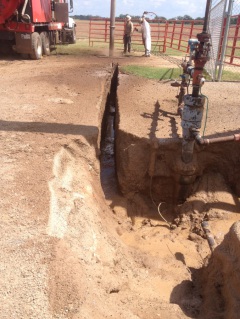
Every day, contractors, municipalities and utilities excavate for installation of
underground facilities. They also locate existing pipes, cables and lines for maintenance and repairs. The U.S. presently has more than 14 million
miles of buried utilities and pipes. Current laws prohibit the use of mechanical means to dig within 18 inches of buried cable and pipe in the U.S. Buried utilities are often mis-marked or the maps
are inaccurate. This requires underground facilities to be located by sight, by hand digging or by another means to maximize safety. This is often called “daylighting.” Unfortunately, digging by hand
is often time-consuming, and mechanical excavation is inherently risky. With these traditional methods, there are numerous reports of injuries,
deaths, explosions and fires from unsafe or poorly planned excavations that strike underground facilities. A single incident may cause personal
injury or death, property damage, lost work opportunity, community disruption, ecological damage or an insurance liability claim. The importance of minimizing underground utility strikes and their
consequences cannot be denied. Advanced planning, effective use of one-call systems, accurate locating and marking underground facilities and the use of safe-digging practices can all be very
effective in reducing underground facility damage. In most states, increased and mandatory use of the state’s one-call system has significantly reduced the incidence of excavation damage.
However, damage still occurs. Many of these incidents can be avoided by utilizing hydro
excavation.





